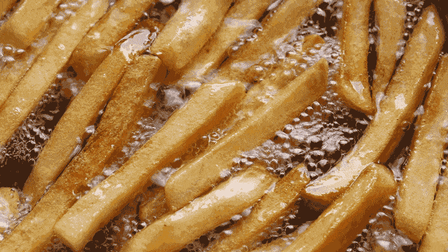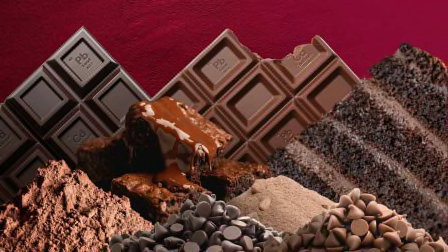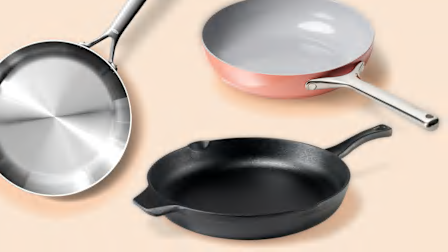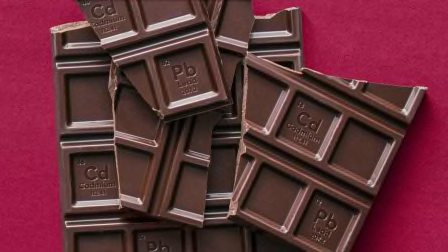Halloween Face Paint Can Be Toxic to Kids
Here’s how to ditch the makeup and DIY instead
Around Halloween time many parents worry about trick-or-treating safety and curfews, sugar crashes, and ruined bedtimes. But here’s something you might not be thinking about, but should be: toxic ingredients in your kids’ face paints and powders.
Studies in recent years have found Halloween face paints that contain heavy metals like lead and cadmium, and powdered makeup marketed to kids that are contaminated with asbestos. Even small exposures to these toxins are dangerous: Lead affects brain development, asbestos is a carcinogen, and cadmium is an endocrine disruptor, which are chemicals that have been linked to certain cancers and other health problems.
It’s a common misconception that if a product you put on your body (or on your kids) is for sale in the U.S., it must be safe. But unlike its oversight of food and drugs, the Food and Drug Administration has very little power to regulate the safety of cosmetic ingredients. The agency surveys products that are already on the market, but it does not approve their safety beforehand. It can put out public notices when it finds something of concern, but it can not mandate product recalls.
Kids' Cosmetics, Frightening Findings
Some organizations focused on health have taken oversight upon themselves.
In 2016, The Breast Cancer Fund bought dozens of cosmetic products marketed directly to kids and tweens, to evaluate them for carcinogens and other toxins associated with increased breast cancer risk. As part of this study they took a close look at 48 face paints from Halloween makeup kits with themes like “zombie,” “Batman,” and “Paw Patrol.”
When they sent the paints to an independent lab to test them for the presence of arsenic, cadmium, chromium, lead, and mercury, the results were scary. Twenty-one of the paints tested positive for at least one of these chemicals, and some had as many as four. They also found that the darker the paint, the higher the concentration of heavy metals.
You can’t always tell by reading a label that a product might be contaminated—the face paints the group tested certainly didn’t list “lead” as an ingredient. But sometimes, labels contain clues about which products to avoid. For example, talc is still widely used in powdered makeup, like eyeshadow, blush, and foundation–and it will be listed as an ingredient.
Manufacturers use talc as a filler ingredient and to give powdered cosmetics a slippery consistency. Unfortunately, talc and asbestos tend to exist in close proximity to one another in nature, and when talc is mined, asbestos can get mixed in and contaminate it. When asbestos is inhaled, it can cause lung cancer, mesothelioma, and other health problems.
In 2020, Johnson & Johnson announced that it would discontinue its talc-based baby powder in the U.S. and Canada, after facing years of lawsuits alleging that it contained asbestos. While the company has maintained that its talc-based products were safe, the FDA says that talc has “the potential for contamination.” Still, talc is not prohibited in cosmetics and in fact is still present in many such products, including those marketed directly to children.
The nonprofit Environmental Working Group sent talc-based makeup to be tested for asbestos in 2020 and found the carcinogen in two eyeshadow palettes and one toy makeup kit for kids. The FDA had previously found asbestos in two brands of kids’ powdered makeup as well—sold by Claire’s and Justice retailers.
Because of the nature of asbestos contamination, it’s difficult even for manufacturers to know whether the talc they are using contains it, says EWG senior scientist Tasha Stoiber, PhD.
“Really the only way you would know is with consistent testing, or a company that has done extremely rigorous testing of their supply, which usually doesn’t happen, especially not in the cheapest products,” says Stoiber. “So it’s a good bet to avoid products that contain [talc] as an ingredient, because it’s really hard to know if it’s contaminated or not."
What’s a Parent to Do?
If kids insist on using face paint and powders, The Breast Cancer Fund says that the darkest pigments are the ones to avoid the most. Or better yet, skip the store-bought stuff altogether this Halloween, and make the makeup part of a DIY costume project.
EWG’s Stoiber suggests buying (or making your own) natural vegetable dyes to mix up some makeup at home instead. Cherry juice plus cornstarch plus sugar can make some believable blood for your tiny Dracula, believe it or not. And face moisturizer plus corn starch plus carrot juice can help turn your kid into a pumpkin.
"As a rule of thumb, I would avoid buying a toy makeup kit . . . there’s just been too many red flags in the past in testing that’s been done,” says Stoiber. “There’s going to be a lot of questions about the safety of those products.”

















